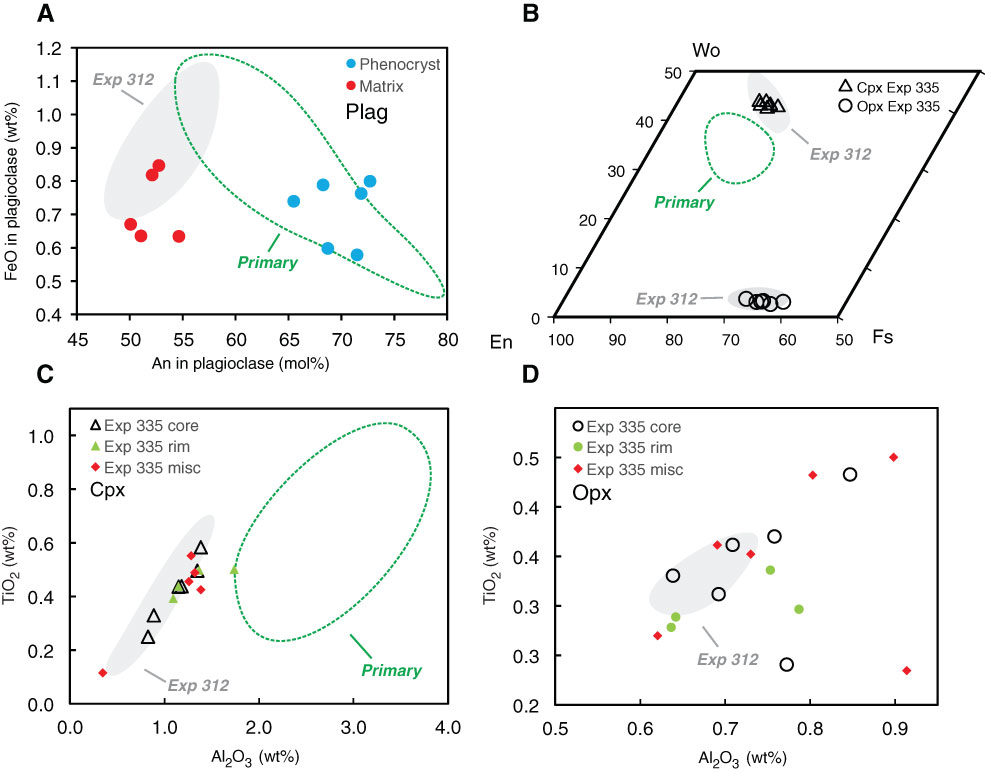
Figure F7. Selected compositional parameters for plagioclase (Plag) and pyroxene from granoblastic hornfels recovered from Hole 1256D. Data points correspond to averages presented in Table T3. Included are also fields for primary clinopyroxene (Cpx) and Plag from fresh basalts from Leg 206 and Expedition 309 published by Dziony et al. (2008), as well as compositions from Plag, Cpx, and orthopyroxene (Opx) from granoblastic hornfels drilled during Expedition 312 published by Koepke et al. (2008). All data correspond to averages of core compositions. A. FeO vs. anorthite (An) content in Plag for both relict phenocrysts and matrix grains (only core analyses). Data for matrix Plag from Sample 335-1256D-235R-1W-19 were excluded due to relics of primary An-rich Plag (see text for detail). Note that the phenocryst compositions are distinctly higher in An content compared to the compositions of the matrix Plag overlapping with those compositions characteristic for primary Plag in fresh basalts and dikes recovered from the upper part of the Hole 1256D drill core. B. Pyroxene quadrilateral enstatite (En), ferrosilite (Fs), and wollastonite (Wo). Only core analyses were used. Note the good correspondence with pyroxenes from granoblastic hornfels drilled during Expedition 312 and the marked difference in compositions between Cpx of the granoblastic hornfels and that of the fresh basalts and dikes drilled in the upper part of the hole. C. TiO2 vs. Al2O3 in Cpx. Note the good correspondence between core, rim, and other analyses (miscellaneous [misc] in veins, clusters, and bands and as inclusions in other minerals) implying that a high grade of global chemical equilibrium in these samples has been achieved. D. TiO2 vs. Al2O3 in Opx. Note the good correspondence between core, rim, and other analyses (miscellaneous [misc] in veins, clusters, and bands) varying only in a small interval.

Previous | Close | Top of page